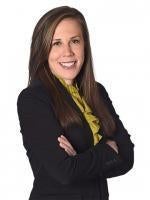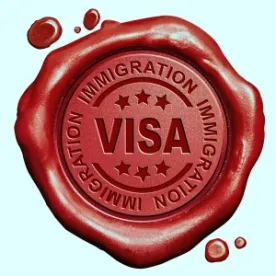This week, the Student and Exchange Visitor Program (SEVP) published its quarterly “SEVIS by the Numbers” report announcing that there are over one million international students in the United States. Many of these students will seek employment with U.S. companies using work authorization granted to them pursuant to their F or M visa status. In response to this growing population, employers must familiarize themselves with certain compliance requirements that were passed in May 2016, as outlined below.
By way of background, the SEVP monitors F and M students and their dependents while in the United States to ensure that rules and regulations are followed by international students. Additionally, the SEVP manages the Student and Exchange Visitor Information System (SEVIS), which contains information on international students and the schools that enroll them.
 According to the July 2016 “SEVIS by the Numbers” report, published on Aug. 30, there are 1.11 million international students with F (academic) or M (vocational) status enrolled at schools in the United States as of July 2016, demonstrating a 5.5 percent increase from July 2015. The top three countries of citizenship of these international students are China, India and South Korea. By continent, 77 percent of all F and M students originate from Asian nations, followed by 7 percent from Europe, 6 percent from North America, 5 percent from South America, 4 percent from Africa and 0.5 percent from Australia/Pacific Islands. The report also provides statistics on F and M students by gender, indicating that 57 percent of all F and M students studying in the United States are male. According to the report, Eastern Europe sends the most females (57 percent of F and M females studying in the United States) and Western Asia the most males (76 percent of males studying in the United States).
According to the July 2016 “SEVIS by the Numbers” report, published on Aug. 30, there are 1.11 million international students with F (academic) or M (vocational) status enrolled at schools in the United States as of July 2016, demonstrating a 5.5 percent increase from July 2015. The top three countries of citizenship of these international students are China, India and South Korea. By continent, 77 percent of all F and M students originate from Asian nations, followed by 7 percent from Europe, 6 percent from North America, 5 percent from South America, 4 percent from Africa and 0.5 percent from Australia/Pacific Islands. The report also provides statistics on F and M students by gender, indicating that 57 percent of all F and M students studying in the United States are male. According to the report, Eastern Europe sends the most females (57 percent of F and M females studying in the United States) and Western Asia the most males (76 percent of males studying in the United States).
Further, the July 2016 report indicates that 42 percent of all F and M students (or 466,964) are studying in STEM fields. Thus, the number of active STEM F and M students studying in the United States has increased by 15.2 percent since July 2015. Of the 466,964 F & M students studying in STEM fields in the United States, 87 percent (406,732) originate from Asia.
Pursuant to the May 10, 2016 STEM OPT extension rule, students who have earned a STEM degree from a U.S. school are eligible for a 24-month extension of their Option Practical Training (OPT), for a total opportunity of up to 36 months of employment authorization in the United States (a seven-month increase from the prior 17-month STEM OPT extension). The extended time period offers a number of benefits to both international students and U.S. employers wishing to hire them. Most notably, the seven-month extension provides F-1 STEM OPT holders additional opportunities to be selected in the annual H-1B lottery. As the number of international students continues to rise, the annual H-1B cap will continue to be challenged, heightening the benefit of additional opportunities to apply under the H-1B cap.
In addition to offering substantial benefits, the May 10 rule imposes additional compliance requirements on STEM OPT employees, their schools and their employers:
-
In order to employ an F-1 STEM OPT holder for the duration of his or her 24-month extension, the employer must have a Federal Employer Identification Number (FEIN) and be enrolled in E-Verify.
-
STEM OPT employees must work with their employer to complete Form I-983 “Mentoring and Training Plan.” Employers must evaluate student progress by signing an evaluation on an annual basis – first during the initial 12-month period and finally at the conclusion of the STEM OPT extension.
-
Employers are required to attest that they are not replacing full- or part-time, temporary or permanent U.S. employees with STEM OPT employees.
-
Employers must report the early departure of a STEM OPT employee to the student’s Designated School Official (DSO) within five days of departure when the student terminates or departs his or her employment before the end of the authorized OPT period.
-
Employers of STEM OPT employees are required to guard against adverse action to full- or part-time U.S. employees by ensuring the STEM OPT employee’s duties, hours, and compensation are commensurate with similarly situated U.S. employees; the company has sufficient resources and trained personnel available to provide training in the specified opportunity; and the opportunity will help the student attain his or her training objectives.
-
STEM OPT employees must update their DSO about any personal name or address changes, as well as any changes to his or her employer’s name or address.
-
STEM OPT extensions are only available to students with degrees from school accredited by an accrediting agency recognized by the U.S. Department of Education.
Further, under the new STEM OPT rule, DHS will conduct announced and unannounced employer-site visits to ensure that international students and employers are following the formal training plans that were provided to DHS in order to obtain STEM OPT extensions.
In light of the increasing number of international students, employers should be aware of the updated requirements for STEM OPT extensions. U.S. employers should also verify these employees’ need to change to H-1B status to ensure continued work authorization beyond the expiration of their OPT. U.S. employers should plan to file all H-1B cap petitions for FY2018 by March 31, 2017.



 />i
/>i

